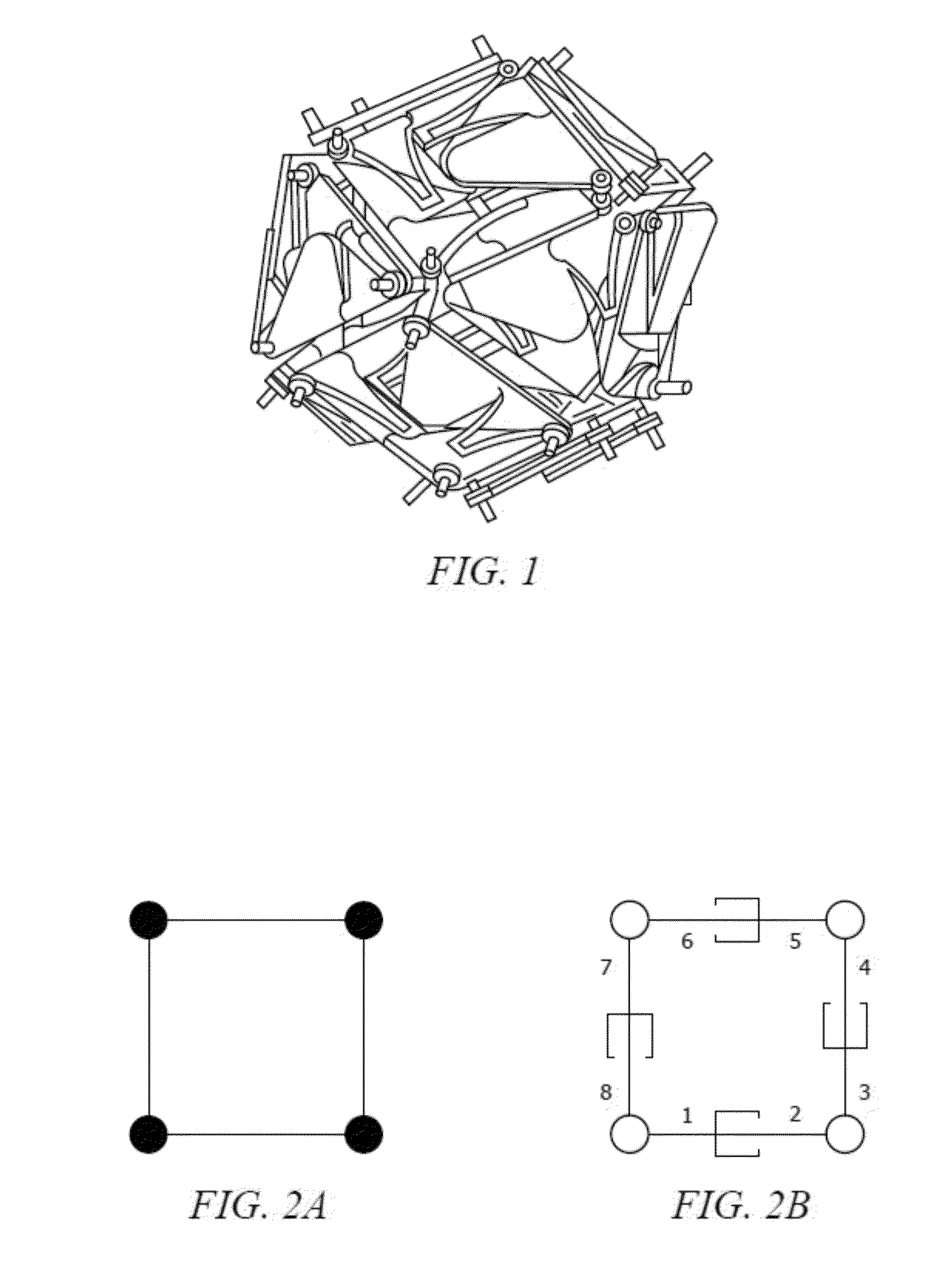Multistable shape-shifting surfaces
- Summary
- Abstract
- Description
- Claims
- Application Information
AI Technical Summary
Benefits of technology
Problems solved by technology
Method used
Image
Examples
example 1
[0140]Applying these design rules, a square unit cell is chosen, and an application allows each of the four sides and four corners to be able to expand and contract. The minimum number of side members for which this can be achieved is eight (8). Each side of the square unit cell is associated with two side members, and each corner is associated with two side members. The two-thirds rule is used to select the length of the side member and the angle of the member attached at the node, as depicted in FIG. 4.
[0141]A compliant mechanism, depicted in FIG. 6A, also referred to as a side member, includes a compliant flexure 14 and a shield or plate segment 12 that functions as a link and slider. It can be seen that the rigid area-covering portion (i.e., plate segment) 12 constitutes two-thirds of the entire length of the side member. A one-third movement is possible in compression and expansion before gaps form. In addition, the angle at the node is two-thirds of a right angle. This allows ...
example 2
[0146]Eight side-members are assembled to form the deformable square unit cell depicted in FIG. 7A. FIG. 7B shows the unit cell in a stable sheared position. FIG. 7C shows the unit cell in a stable expanded (or tensed) position. FIG. 7D shows the unit cell a stable compressed position. The amount of deflection that the compliant mechanism can achieve is dependent on the mechanism's geometry and the material properties.
[0147]Depending upon the application, adjacent unit cells are designed to limit motion by sharing nodes, or to increase mobility by having separate sets of nodes that may translate with respect to each other. By leveraging the side members, the side members can be stabilized in one position, then sheared, expanded or compressed, and stabilized in the second position.
example 3
[0148]Large-scale geometric effects can be achieved by attaching dissimilar unit cells to each other in ways that put a first cell in tension (i.e., expansion) and a contiguous second cell in compression. For example, a conical surface is created by attaching a smaller compliant ring to a larger one as depicted in FIGS. 8A and 8B. The ability to mate unit cells of dissimilar size enables a discrete set of unit cell sizes to provide the adequate geometric flexibility to build a wide variety of surfaces with varying predetermined shapes of stability.
[0149]As depicted in FIGS. 8A and 8B, shape changes can be induced by joining unit cells of dissimilar size. Surfaces are developable if they can be formed by bending, but not stretching or compressing any part of a flat sheet. Multistable shape-shifting surfaces with flexible boundaries between unit cells can be assembled to form developable surfaces such as the one depicted in FIGS. 8A and 8B.
[0150]It is contemplated that the unit cells ...
PUM
 Login to View More
Login to View More Abstract
Description
Claims
Application Information
 Login to View More
Login to View More - R&D
- Intellectual Property
- Life Sciences
- Materials
- Tech Scout
- Unparalleled Data Quality
- Higher Quality Content
- 60% Fewer Hallucinations
Browse by: Latest US Patents, China's latest patents, Technical Efficacy Thesaurus, Application Domain, Technology Topic, Popular Technical Reports.
© 2025 PatSnap. All rights reserved.Legal|Privacy policy|Modern Slavery Act Transparency Statement|Sitemap|About US| Contact US: help@patsnap.com



